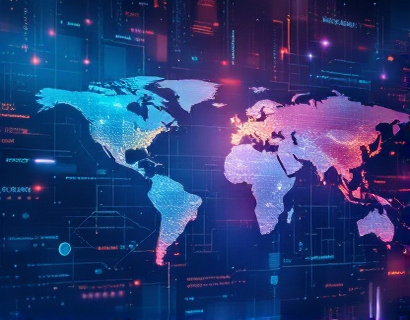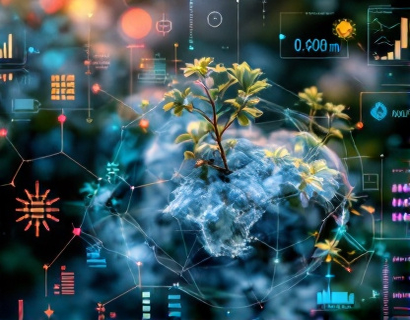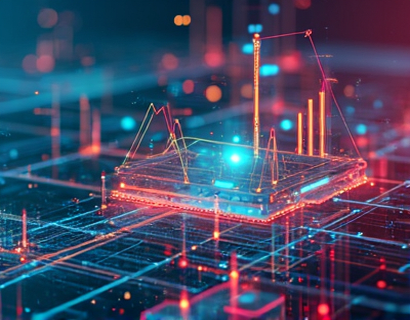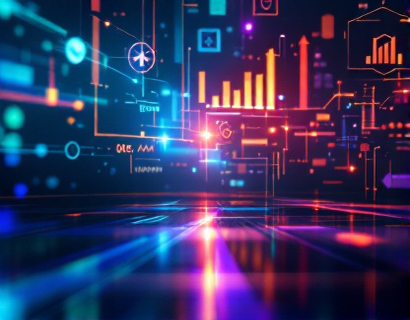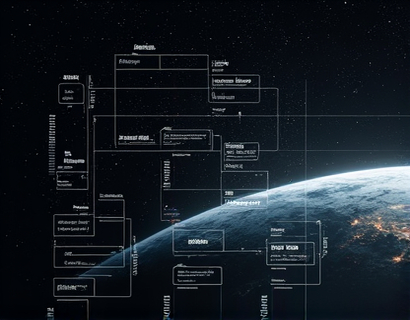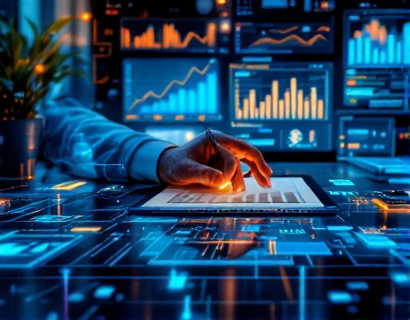Revolutionizing Digital Engagement: The Synergy of Crypto and AI
The intersection of cryptocurrency and artificial intelligence (AI) is ushering in a new era of digital engagement, transforming how users interact with technology and each other. This transformative synergy is not just about enhancing user experiences but also about redefining the very fabric of the digital ecosystem. As tech enthusiasts and professionals, understanding the profound impact of these technologies is crucial for staying ahead in the rapidly evolving tech landscape.
The integration of cryptocurrency and AI is creating advanced solutions that offer unprecedented levels of security, efficiency, and personalization. These technologies are breaking down traditional barriers, enabling seamless transactions, and fostering innovative applications that were once thought impossible. This article delves into the core aspects of this revolution, providing insights that are essential for anyone interested in the future of digital technology.
Enhanced Security Through Cryptographic Techniques
One of the most significant contributions of cryptocurrency to the digital ecosystem is its use of cryptographic techniques to ensure security. Blockchain technology, the backbone of cryptocurrencies, employs complex algorithms to create an immutable and transparent ledger of transactions. This ensures that data is tamper-proof and secure from unauthorized access.
AI complements this by enhancing security measures through advanced threat detection and response systems. Machine learning algorithms can analyze vast amounts of data in real-time to identify patterns and anomalies that may indicate a security breach. This proactive approach to security is vital in a world where cyber threats are becoming increasingly sophisticated.
Streamlined Transactions with Smart Contracts
Smart contracts, self-executing contracts with the terms directly written into code, are another revolutionary feature of blockchain technology. These contracts automatically enforce and execute agreements when predefined conditions are met, eliminating the need for intermediaries. This not only reduces costs and delays but also increases transparency and trust in transactions.
AI can further optimize smart contracts by predicting potential issues and suggesting improvements. For instance, AI can analyze historical data to identify common failure points and propose code modifications to prevent future issues. This synergy ensures that transactions are not only secure but also efficient and reliable.
Personalized User Experiences Through AI
AI's ability to process and analyze large datasets makes it an invaluable tool for creating personalized user experiences. In the context of cryptocurrency and digital services, AI can tailor recommendations, content, and interactions based on individual user preferences and behaviors. This level of personalization enhances user engagement and satisfaction, leading to higher retention rates and increased adoption of digital services.
For example, AI-driven recommendation systems can suggest crypto assets or services that align with a user's investment goals and risk tolerance. By continuously learning from user interactions, these systems become more accurate over time, providing a more intuitive and satisfying experience.
Decentralized Finance (DeFi) and AI-Driven Investments
Decentralized Finance (DeFi) is a rapidly growing sector that leverages blockchain technology to create financial systems without traditional intermediaries. AI plays a crucial role in DeFi by providing advanced analytical tools for investment decision-making. AI algorithms can process vast amounts of market data to identify trends, predict price movements, and optimize portfolios.
These AI-driven insights enable users to make more informed decisions, reducing the risk of costly mistakes. Additionally, AI can automate trading processes through algorithmic trading, executing trades at optimal times based on predefined criteria. This combination of DeFi and AI is democratizing access to sophisticated financial tools, making high-level investing more accessible to a broader audience.
Enhancing User Authentication with Biometrics and AI
User authentication is a critical aspect of digital security, and the integration of AI and biometric technologies is setting new standards for authentication. Biometric data, such as fingerprints, facial recognition, and voice patterns, provide a more secure and convenient way to verify user identities compared to traditional passwords.
AI enhances biometric authentication by improving accuracy and reducing false positives. Machine learning algorithms can adapt to individual user characteristics over time, ensuring that the authentication process remains robust even as users' biometric data changes. This not only enhances security but also improves the user experience by eliminating the need to remember complex passwords.
Fraud Detection and Prevention
Fraud is a persistent challenge in the digital world, and the combination of cryptocurrency and AI is revolutionizing how it is detected and prevented. AI algorithms can analyze transaction patterns and user behavior to identify suspicious activities in real-time. By learning from historical data, these systems can adapt to new fraud tactics, staying one step ahead of malicious actors.
For instance, AI can detect anomalies in blockchain transactions that may indicate fraudulent activity, such as unusual transaction volumes or patterns. This proactive approach to fraud detection helps protect users and maintain the integrity of the digital ecosystem. Additionally, AI can assist in compliance monitoring, ensuring that transactions adhere to regulatory requirements.
User-Centric Design and AI-Powered Interfaces
The user interface (UI) and user experience (UX) design of digital platforms are crucial for engagement and adoption. AI is transforming UI/UX design by providing insights into user behavior and preferences, enabling designers to create more intuitive and user-friendly interfaces. AI can analyze data from user interactions to identify pain points and areas for improvement, allowing for data-driven design decisions.
Moreover, AI-powered chatbots and virtual assistants are becoming increasingly sophisticated, offering seamless and natural interactions with users. These AI-driven interfaces can handle a wide range of tasks, from answering queries to guiding users through complex processes, enhancing the overall user experience.
Market Predictions and AI-Driven Insights
The integration of AI in market analysis is providing unprecedented insights into market trends and predictions. AI algorithms can process and analyze vast amounts of data from various sources, including social media, news articles, and market reports, to identify patterns and forecast future movements.
For crypto investors, AI-driven market predictions can be invaluable. By analyzing historical data and real-time market conditions, these algorithms can provide actionable insights that help investors make informed decisions. This not only enhances the investment process but also increases the potential for successful outcomes.
Challenges and Considerations
While the synergy of cryptocurrency and AI offers numerous benefits, it also presents challenges that must be addressed. One of the primary concerns is the regulatory landscape, as governments around the world are still grappling with how to regulate these emerging technologies. Compliance with varying regulations is essential to ensure legal and ethical operations.
Another challenge is the technical complexity involved in integrating AI with blockchain systems. Developing robust and scalable solutions requires expertise in both domains, and there is a need for skilled professionals who can bridge the gap between these technologies. Additionally, ensuring the privacy and security of user data remains a top priority, as the combination of AI and cryptocurrency involves handling sensitive information.
Future Prospects and Innovations
The future of cryptocurrency and AI is bright, with numerous innovations on the horizon. One area of excitement is the development of decentralized AI models, where AI algorithms are trained and run on decentralized networks, enhancing privacy and reducing reliance on centralized servers. This approach can lead to more resilient and secure AI systems.
Another promising development is the integration of AI with other emerging technologies, such as the Internet of Things (IoT) and 5G networks. This convergence can create smart, interconnected systems that offer real-time data processing and analysis, further enhancing digital engagement and efficiency.
In conclusion, the combination of cryptocurrency and AI is revolutionizing the digital ecosystem, offering advanced solutions that enhance security, efficiency, and personalization. By embracing these technologies, tech enthusiasts and professionals can unlock new possibilities and drive growth in the digital landscape. As the field continues to evolve, staying informed and adaptable will be key to harnessing the full potential of this transformative synergy.








